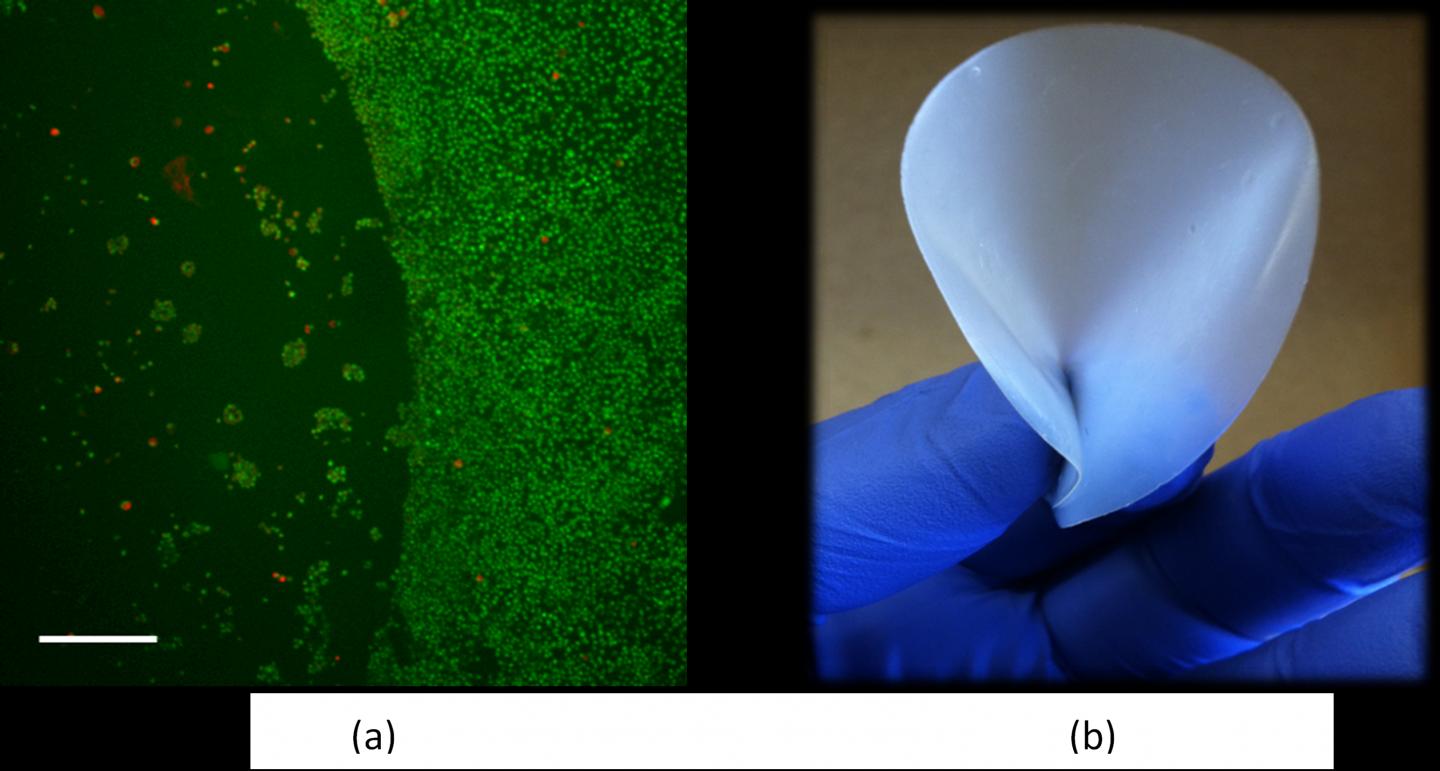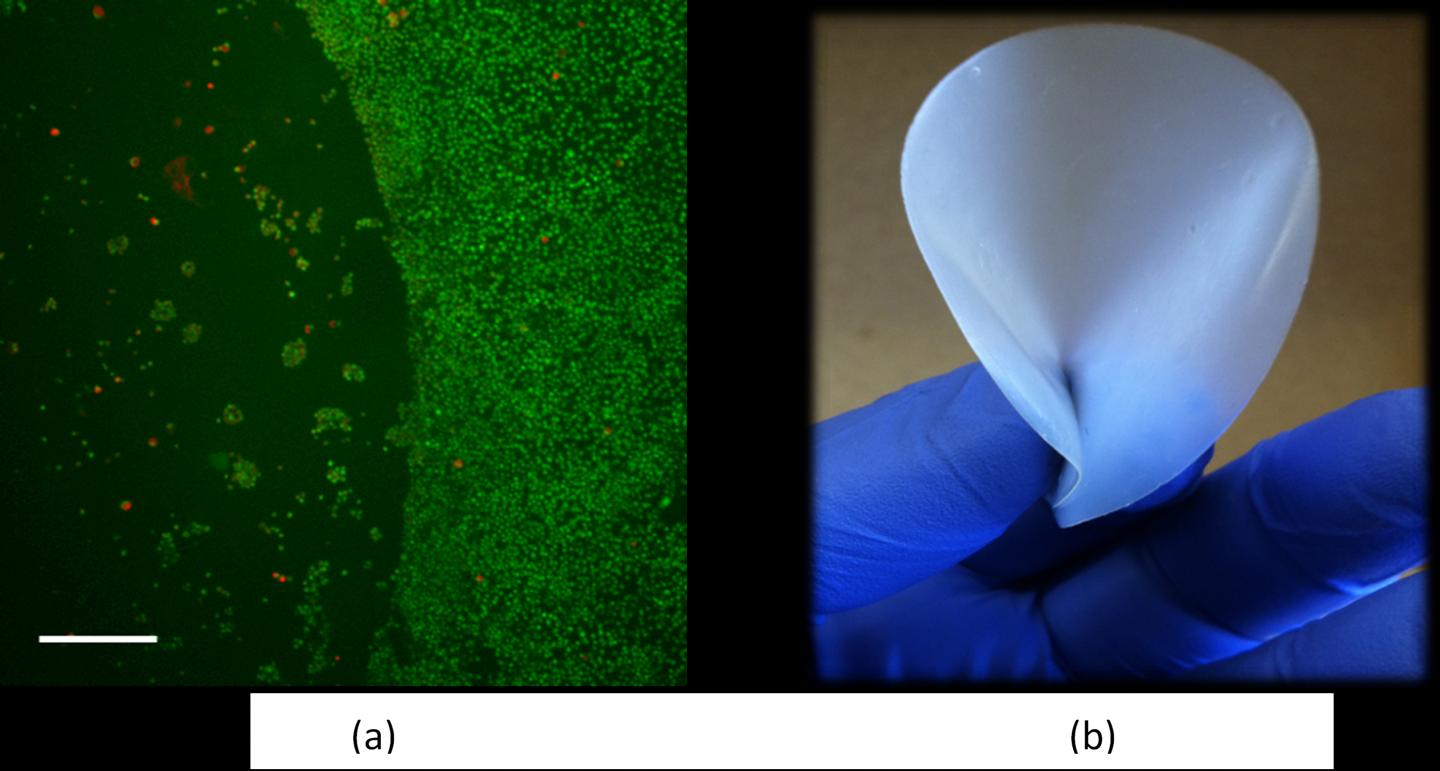
(a) The live cells outside the 1 μL dot of PEC indicate that the material does not create a toxic environment (Scale bar: 500 μm). This suggests that the material inhibits…
Credit: Noshir A. Langrana et al.
In a paper published in TECHNOLOGY, a group of researchers have investigated a novel Polyelectrolyte complex (PEC) that provides a barrier to prevent adhesions in post-operative complications. This has the potential to avoid the need for a second surgery to remove the adhesions.
Adhesions are fibrous bridges that form between tissues and organs. They can occur in spinal, intestinal, and peritoneal (abdominal cavity) regions of the body, as a result of surgery, injury, inflammation, or infection. Adhesions usually occur in abdominal, pericardial, and peridural spaces. It is estimated that 303,836 hospitalization cases, 800,000 days of in-patient care and $1.33 billion expenditures can be attributed to adhesion formation. Adhesion causes discomfort, extreme pain, reduced mobility, difficulty breathing, and infertility. The success rates of available anti-adhesive barriers are still low and there is a need for development of more effective bio-materials, which can significantly reduce adhesions.
A team of researchers from the Rutgers University, New Jersey have demonstrated a novel biomaterial film that is strong, flexible, and provides a physical barrier to prevent the joining of surfaces that should not stick together. The substrate-cells electrostatic interactions with the film also help prevent adhesions from forming.
"By taking advantage of the inherent properties of at least two oppositely charged polymers. Polyelectrolyte complexes (PEC) primarily consist of Polymers with negatively charged functional groups such as carboxylate and sulfate have demonstrated an inhibitory effect on adhesions of macrophages, lymphocytes, platelets and fibroblasts," says Professor Noshir Langrana, PhD of the Rutgers University and Principal Investigator on the paper.
Current technologies have issues such as brittleness and an inability to prevent adhesions in the presence of blood. The technology we have developed is from a natural, non-toxic material complex that has the desired barrier properties including: being biodegradable in 1-2 weeks, cellular anti-adhesive, flexible, and reasonably strong. The design of Polyelectrolyte complexes (PEC) primarily consist of at least two oppositely charged polymers. Polymers with negatively charged functional groups such as carboxylate and sulfate have demonstrated an inhibitory effect on adhesions of macrophages, lymphocytes, platelets, and fibroblasts. This film would prevent adhesions by providing a physical barrier to stop the surfaces that should not stick together from joining. The substrate-cells electrostatic interactions with the film also help prevent adhesions from forming.
###
Corresponding author for this study in TECHNOLOGY is Noshir A. Langrana (Email: [email protected]).
For more insight into the research described, readers are invited to access the paper on TECHNOLOGY.
Media Contact
Tay Yu Shan
[email protected]
@worldscientific
http://www.worldscientific.com
Original Source
https://www.worldscientific.com/page/pressroom/2018-08-13-01 http://dx.doi.org/10.1142/S2339547818500073





